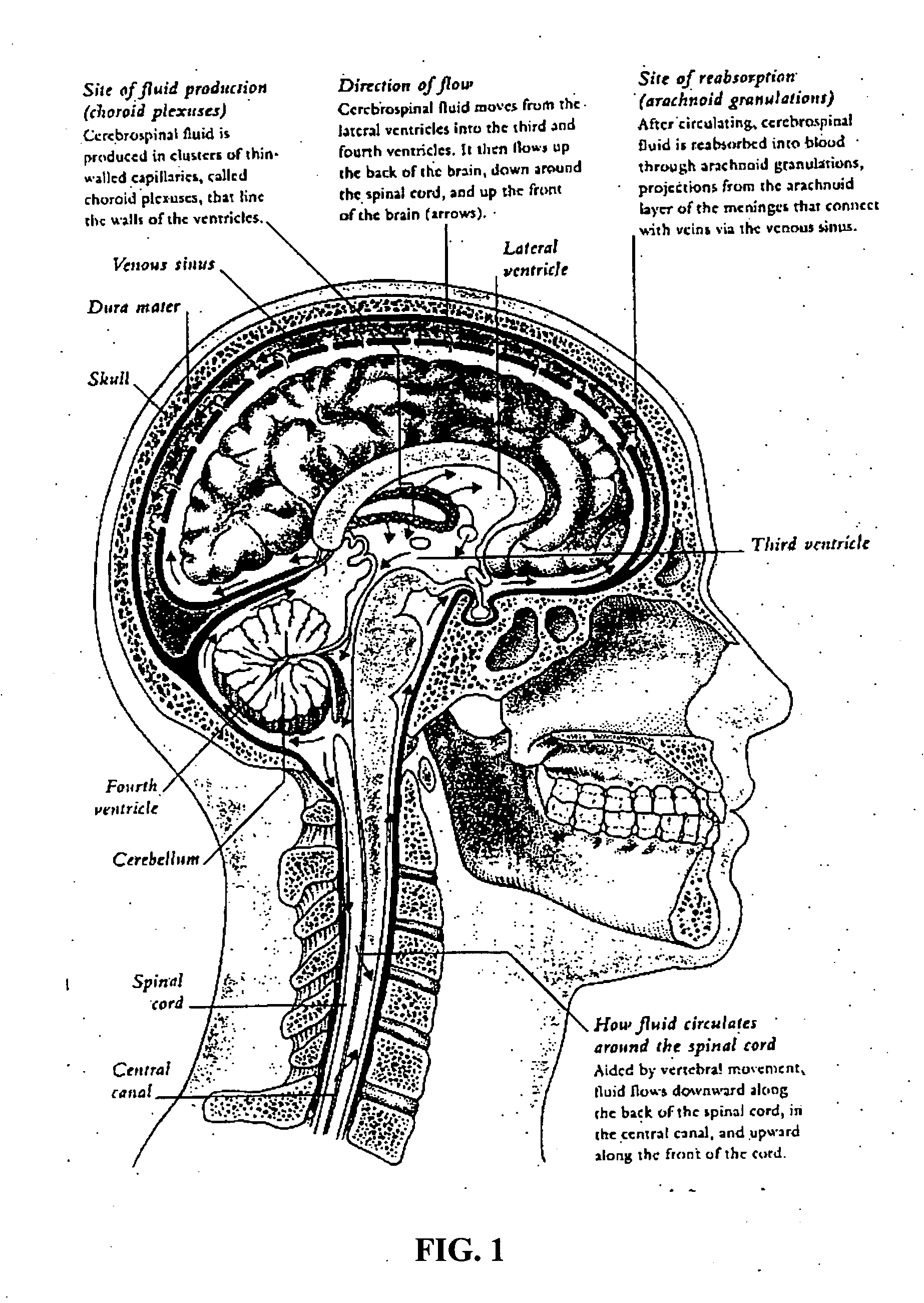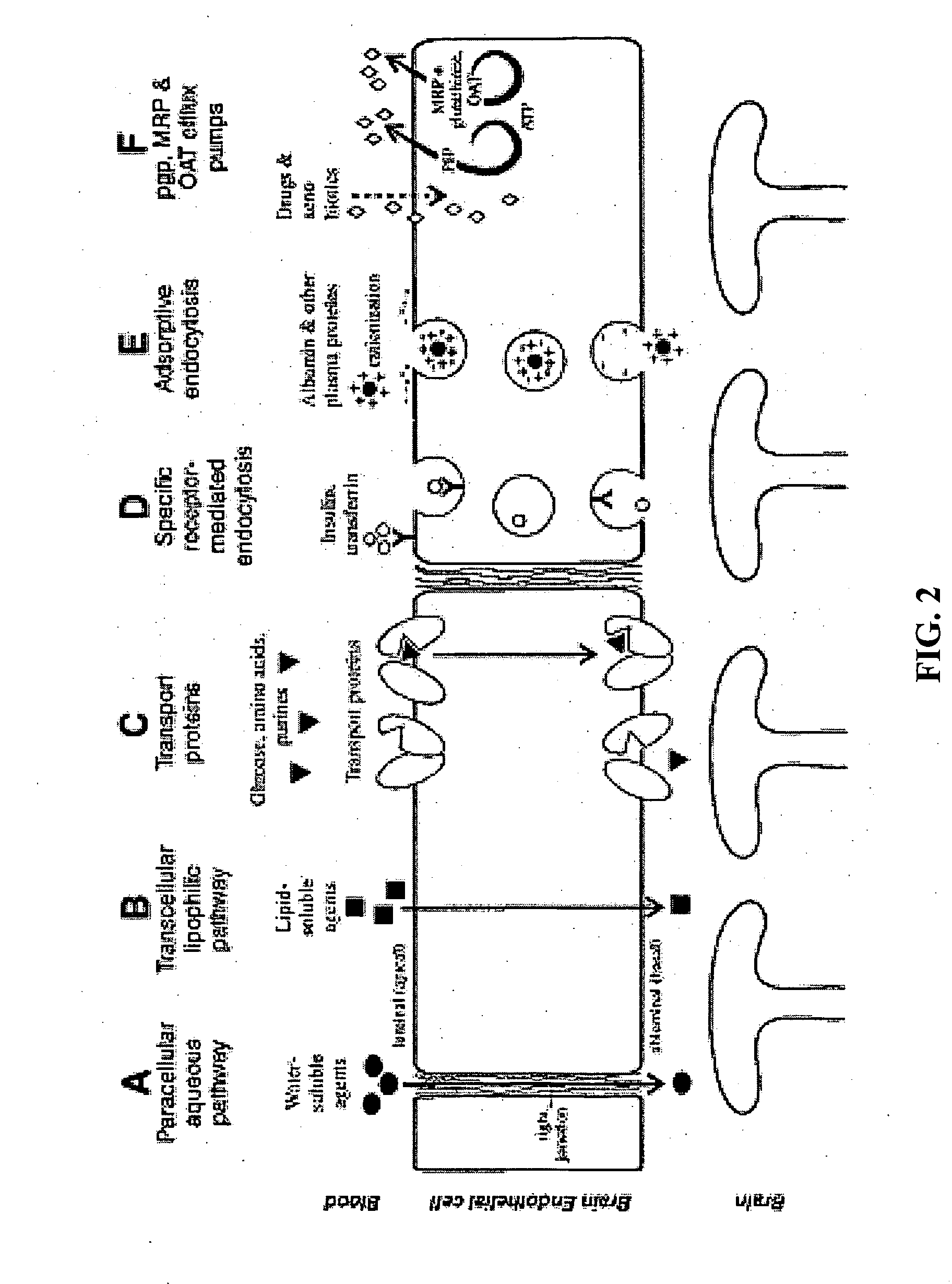Methods and compositions for treating pain
a technology of compositions and pain, applied in the field of methods and compositions for treating pain, can solve the problems of systemic side effects rather than a desired localized action, adversely affecting brain structures or a developing fetus, and achieve the effect of reducing the central nervous system (cns) effect of the analgesic agen
- Summary
- Abstract
- Description
- Claims
- Application Information
AI Technical Summary
Benefits of technology
Problems solved by technology
Method used
Image
Examples
example 1
Human Study of the Effects of Quercetin (Q) and Analgesics
[0336] An empiric trial on the effects of oral quercetin (Q) on sedation, concentration, and pain was conducted. Inclusion criteria included ongoing pain of at least 4 / 10 on the Likert scale, poor tolerance of current analgesic regimen (complaints of sedation, dizziness, inability to focus), and willingness to complete daily diaries.
[0337] Approximately 16 adult subjects with chronic pain were screened and 9 subjects were admitted to the trial. Their pain disorders included peripheral neuropathy (2), facial pain (2), cervical radiculopathy (2), lumbar spine disease (3). Their pre-existing medications included short acting opioids (Vicodin TID, Tramadol 50 mg Q4-6), high dose, long acting opioids (OxyContin 240 mg, Methadone 400 mg), Gabapentin (900 mg and 2700 mg), Ativan, Flexeril, and Soma 350 mg. Seven of the subjects were using at least two analgesic medications. Two subjects were using no current medications because of...
example 2
Reversal Effect of Modulator, Quercetin (Q), on Sedative Effects in Rodents
[0345] An anesthetic wake up test is used to assess the reversal effect of modulator, Q, on the sedative effects of barbiturates, opioids, and benzodiazepines. This is a single blind, randomized, controlled animal trial. Approximately 48 rodents are utilized throughout the study. Animals may be reused. However, a washout of 24 hours is required between exposures.
[0346] Twelve rodents are utilized in each portion of this trial. Intravenous barbiturate (e.g. diprivan, pentobarbital, or phenobarbital) anesthesia is induced and titrated to spontaneous but slow respirations and lack of response to painful stimulation. Supplemental oxygen is delivered. A maximum of 3 doses of intraperitoneal Q are tested (low, medium, high) along with placebo. Once administered rodents are monitored with the help of stopwatch for time to awakening and return to normal respiratory rate. Once awakened, rodents are tested for time t...
example 3
Identification of Efflux Transport Protein Modulators In Vitro
[0348] We are interested in the identification of molecules (including but not limited to excipients listed in the Pharmaceutical Additives Handbook, the Handbook of Pharmaceutical Excipients, or the Food and Drug Administration (FDA) Inactive Ingredient Guide) that would modulate transporter activity, for example by producing a significant increase in substrate efflux transport pumping. A screening process that integrates a P-gP enhancement assay with a software interface for data analysis will be used. P-gP substrate may include paclitaxel (an anti tumor agent) or other molecules which will produce cytotoxicity as an endpoint in this study. See Wang S W, Monagle J, McNulty C, Putnam D, Chen H. “Determination of P-glycoprotein inhibition by excipients and their combinations using an integrated high-throughput process.” J Pharm Sci. 2004 November; 93(11):2755-67.
Cell Culture and Cytotoxicity Assay
[0349] This assay is ...
PUM
| Property | Measurement | Unit |
|---|---|---|
| solubility | aaaaa | aaaaa |
| solubility | aaaaa | aaaaa |
| solubility | aaaaa | aaaaa |
Abstract
Description
Claims
Application Information
 Login to View More
Login to View More - R&D
- Intellectual Property
- Life Sciences
- Materials
- Tech Scout
- Unparalleled Data Quality
- Higher Quality Content
- 60% Fewer Hallucinations
Browse by: Latest US Patents, China's latest patents, Technical Efficacy Thesaurus, Application Domain, Technology Topic, Popular Technical Reports.
© 2025 PatSnap. All rights reserved.Legal|Privacy policy|Modern Slavery Act Transparency Statement|Sitemap|About US| Contact US: help@patsnap.com



